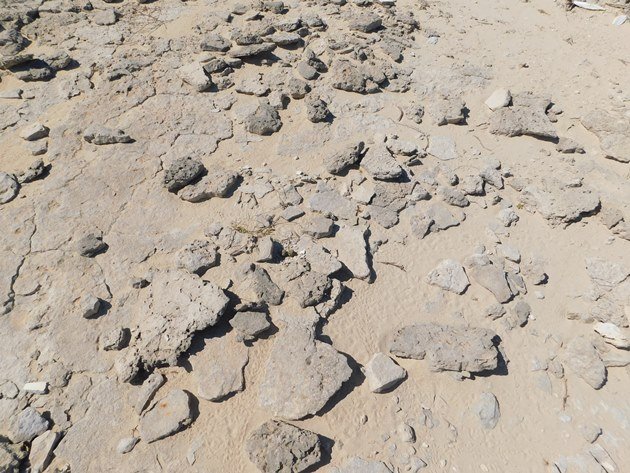
Although I have introduced you to the Red-capped Plover in the past I thought I should show you a nest that we found recently. The Red-capped Plovers along the coast near Broome tend to nest on the sand above the high tide mark. They can also be found inland at the ephemeral lakes and can breed throughout the year if the conditions are right. Just as the Pied Oystercatchers sometimes nest on the sand and sometimes nest on rocky outcrops we have found the same to apply to Red-capped Plovers. On a recent walk on the northern section of Cable Beach we found a Red-capped Plover nest on a rocky outcrop. The nest was about one hundred metres above the high tide mark and behind the sandy area where they do sometimes nest. It is an area that Pied Oystercatchers have nested in other years and that was our reason for being in the area. As usual the nest was heavily camouflaged and the first indication that there was a nest was a female Red-capped Plover suddenly standing up and running forward. The nest is in the header photo if you were wondering!
Whenever a shorebird moves suddenly away from a person you need to consider that it is actually trying to distract you. It wants you to follow. At no time is it deserting its nest or its chicks. Shorebirds may also display a “broken wing” to make you think that it is injured and move you away from the nest. If you do see a chick that appears alone then it is most likely the parents are close by and attempting to distract you. They will return to either the nest or the chick immediately as soon as you move away. There is a “circle” that determines the distance where you can be in relation to the nest or chicks. By observation you will soon learn where you need to be to be outside the area that they believe to be their “safe” zone. We have learnt the “safe” sound that Pied Oystercatchers make to their chicks over the years.
As soon as we observed the Red-capped Plover move we needed to take extreme care. We moved very slowly forward until we found the nest. We took a few photos and moved off. The female Red-capped Plover immediately returned to the nest to incubate her eggs. The male Red-capped Plover was nearby and they generally incubate the eggs at night. The tracks around the nest site belonged to hermit crabs more than the Red-capped Plover.
Red-capped Plover nest
This is one of the more elaborate nests that we have found belonging to a Red-capped Plover. When they nest on the sand they are often little more than a scrape. This nest appeared to have been decorated by small rocks and pieces of coral. Red-capped Plovers usually lay two very small eggs and they also need incubating for around twenty eight days similar to the Pied Oystercatchers.
Red-capped Plover nest
Once the eggs hatch out there will be two very small Red-capped Plover chicks that will venture onto the beach. They will be able to feed themselves, but will be protected by their parents. We have rescued a chick before that was caught in a fast moving incoming tide and although chicks can swim to a certain extent it only seemed right to move it to higher ground. It was soon back with its parents. There are some photos of how small and vulnerable the chicks are when they hatch out right here. The success rate of Red-capped Plovers chicks appears better than Pied Oystercatchers along our coast, but maybe they are too small to be considered worth predating.
If you are always aware of your surroundings and treasure observing nature then soon enough you will be rewarded by the beauty of eggs and subsequently chicks.

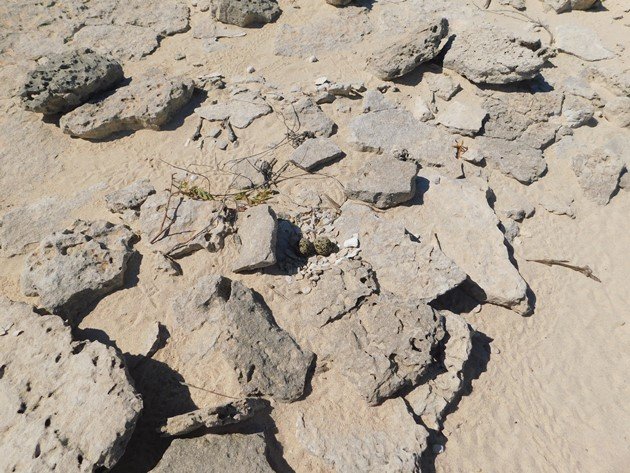

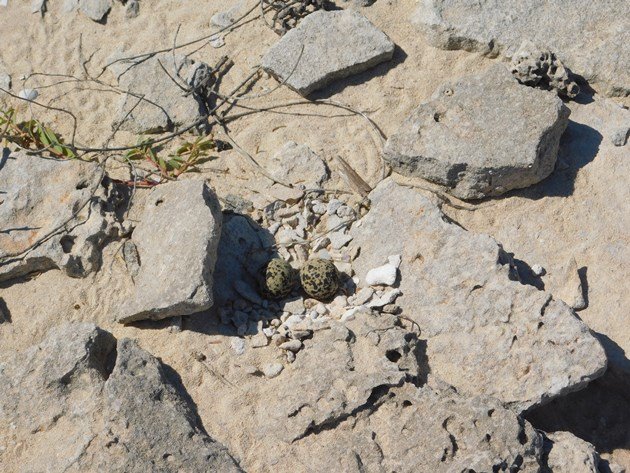
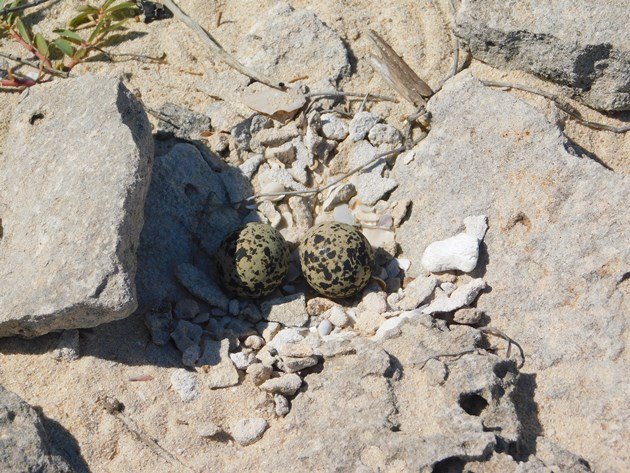
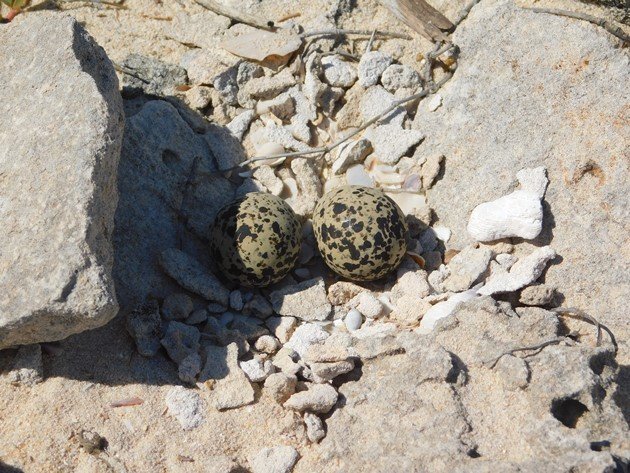
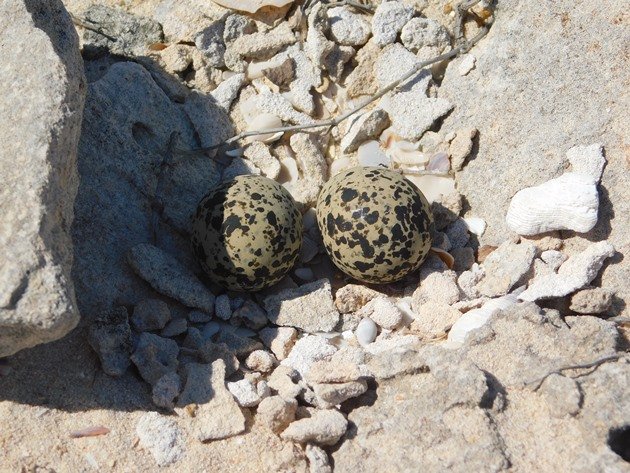










Another great post. Thanks Clare. Looking at the photos in your link, the chicks sure look exposed and vulnerable. Have you been back to check on this nest? Any sign of chicks yet?
Hi Lisa,
The eggs hatched and there are a lot of shorebirds in that area now, so we can’t be sure that the chicks from those eggs are among them. They are usually successful in that area, though. There are a lot of hiding places, so that is to their advantage.
That’s good to know about the hiding places, Clare. On another note, when do you start seeing migratory birds? I ask because many here in the No. Hemisphere have started on their way south.
The first of the juvenile Greater Sand Plovers arrived about ten days ago, but Common Sandpipers had arrived back before that. The first Oriental Plovers were on Cable Beach 28th August and there are also large flocks of Sanderling back. All of the shorebirds are on their way! It is good to see them coming back and know that some things are “normal” this year.